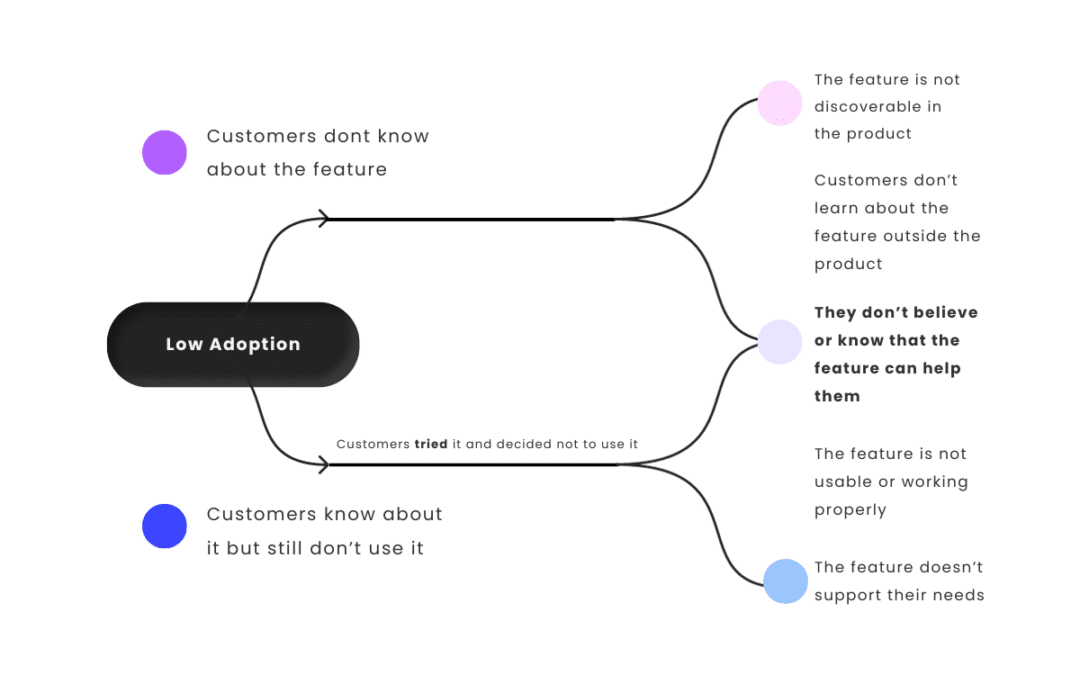Reading Time: 5 minutes
Key Points
- Issue trees help deconstruct and map out problems systematically.
- They are instrumental in breaking a big problem into smaller, more manageable parts and prioritizing them.
- Issue trees can be categorized into problem trees, created by answering “Why?”, and solution trees, created by answering “How?”.
Issue Trees
Issue Trees, vital tools for systematic problem analysis, act as comprehensive maps of problems, allowing for a clear, systematic view of the issues that need solving. They enable the “divide and conquer” strategy by breaking down major problems into smaller, more manageable ones, providing a structured pathway to solutions, and facilitating clear communication about the problem.
Step-by-Step Guide to Using Issue Trees:
Issue Trees mental model can be broken down into two steps:
1. Construct a Problem Tree:
- Start by Breaking Down the Problem: Divide the problem into separate, non-overlapping categories or branches, ensuring they cover the whole problem.
- Apply the MECE Principle: Branches should be mutually exclusive and collectively exhaustive.
- Focus on Broad Categories: Capture the broad categories that make up the problem without diving into specific hypotheses.
- Apply the 80/20 Rule: Concentrate on the most impactful parts of the problem, ideally based on data.
2. Construct a Solution Tree:
- Identify the Problem Part: Select a specific part of the problem and inquire, “How might we improve/fix this?”
- Map out Potential Categories: Outline potential categories of the solution.
- Generate Ideas within Each Category: Within each category, think of possible solutions or improvements.
Example:
Let’s take a relatable example: Overwhelming Stress. One might start by identifying smaller branches like:
- Lack of Awareness on Stress Management Techniques:
- Unaware of Available Techniques
- Lack of exposure or education
- Aware but Not Implementing
- Tried but Discontinued
- Techniques found to be too complex or ineffective This simple issue tree helps to identify a starting point, like focusing on increasing awareness and education on stress management techniques.
- Tried but Discontinued
- Unaware of Available Techniques
Practical Actions, and Reflections:
Build Your Own Tree:
Apply the Issue Tree method to a current problem you are facing. Break down the problem, identify contributing factors or solutions, and analyze to plan your next steps.
Ask Yourself:
What current problems seem overwhelming and could benefit from a structured breakdown using an Issue Tree?
Insight:
Issue Trees are more than analytical tools; they serve as navigational aids through your problems’ intricacies, offering a systematic view and structured approach to solutions, and ensuring every aspect of the problem is addressed.
Tiny Nudge:
When faced with overwhelming problems, breaking them down using an Issue Tree can often reveal solutions and strategies that might not be apparent initially. Next time a daunting problem arises, employ an Issue Tree to pave your clear, structured path forward.
Issue Trees are invaluable in systematically dissecting and analyzing problems, acting as comprehensive guides through the terrain of challenges. By employing this method, you can ensure that you approach problems with clarity, precision, and a well-structured strategy, making the journey from problem to solution a smoother, more manageable one.

